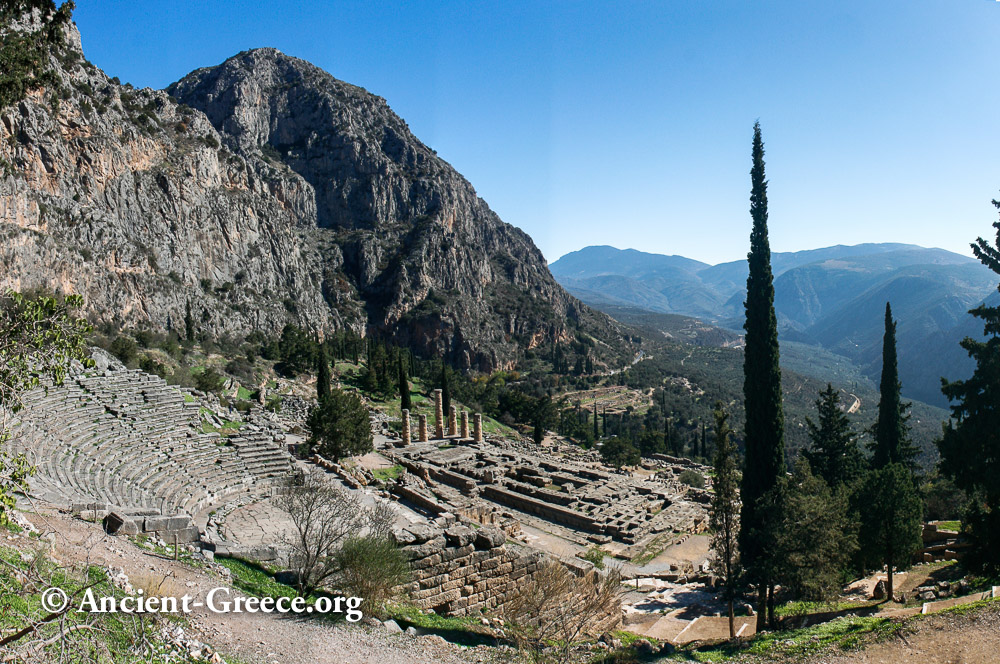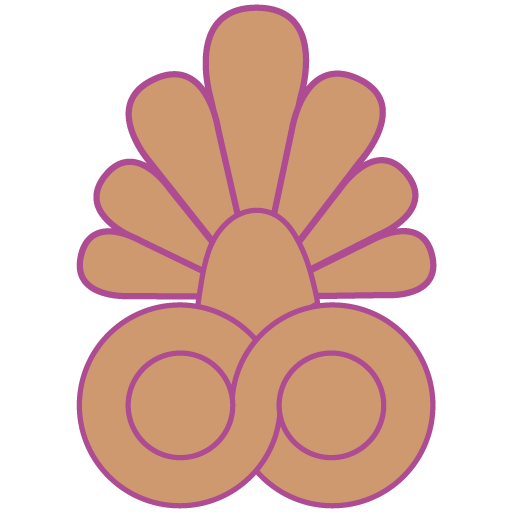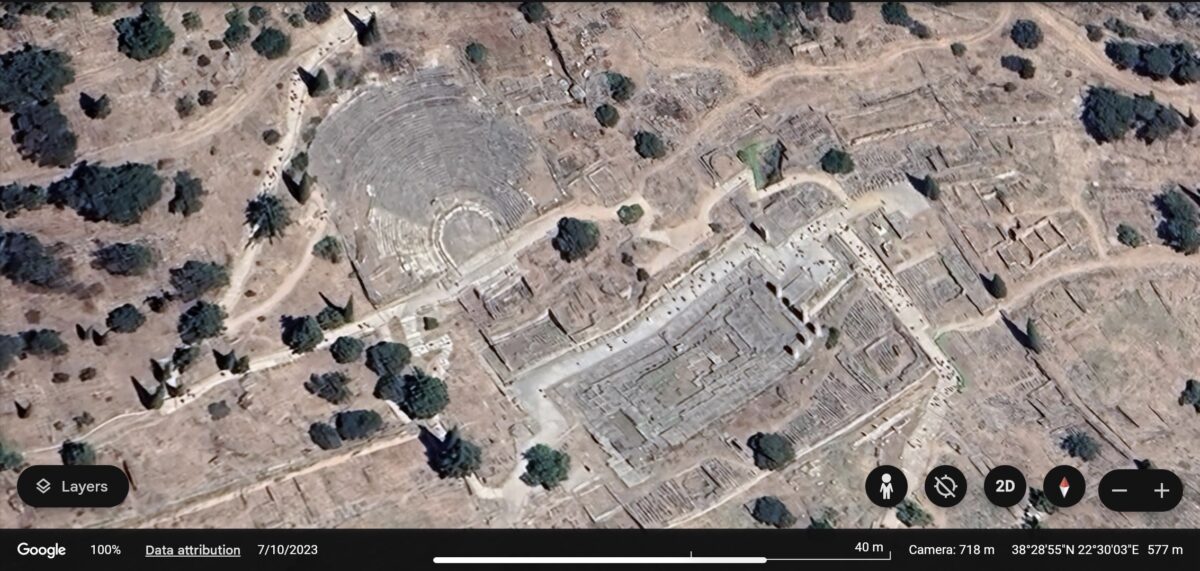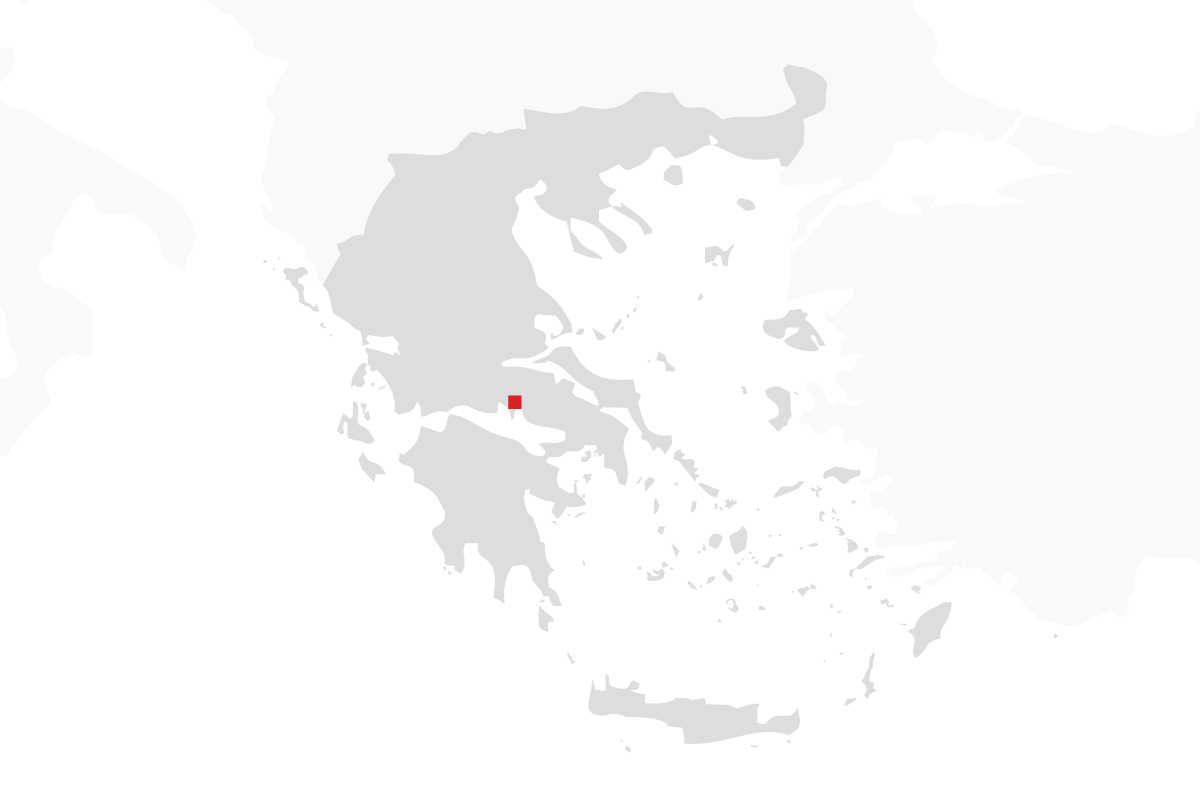
On this page:
Delphi is one of the most important archaeological sites in Greece. The magnitude of the Delphi contributions to the entire ancient civilizations of the Mediterranean were significant, and the extensive excavations have unearthed a wealth of historical information and exquisite art to fill volumes of publications.
In ancient times, many political decisions were taken after consultation of the Oracle, and no colony was founded around the Mediterranean without the blessings of the sanctuary at Delphi. In proportion with its immense influence, the site grew from a small village to an imposing depository of fine architecture and art.
At the Delphi sanctuary excavations have unearthed settlements that date as far back as the Neolithic era. However evidence of the site’s importance dates back to the Mycenaean period (1600-1100 B.C). Most of the ruins that survive today are witness to the site’s pinnacle which was reached in the 6th c. B.C., and are testament to the diverse cultural influences that hovered over the sanctuary for nearly a millennium.
The functions of the Oracle of Delphi grew over the centuries to include athletic games and cultural events and Delphic festivals, the most important of which was the Pythian Games which were held every four years in memory of Apollo’s slaying of the Python Dragon. To accommodate the gratitude that each city/state was eager to express, and all the cultural affairs, the sanctuary evolved to include major temple complexes, a theater, a stadium, and a number of ornate treasuries.
Some of the most prominent edifices on the sacred slopes of Delphi are the temple of Apollo, the ancient theater, the stadium, the sanctuary of Athena Pronaia with the Tholos, the Kastalia spring, and the various treasuries that adorn the sacred way. The archaeological museum on the site contains many important ancient Greek artifacts from the excavations at Delphi.
Athena Pronaia



The sanctuary of Athena Pronaia, and the Tholos.
The tholos is a circular building which was created between 380 and 360 BC at the center of the sanctuary of Athena Pronaia. It is constructed with 20 Doric columns on its exterior diameter which measures 14.76m.
The building stands 13.5 meters tall at the center of the Athena Pronaia sanctuary, and its interior columns were of the Corinthian order.
The Sacred Way







The Sacred Way leads from the entrance to the temple of Apollo through an ascending road flanked by votive offerings and treasuries on both sides. These were dedicated at the sanctuary by city-states to commemorate important victories and historical events. Today the road is lower than it used to be in ancient times, dating to “a later period, when the sanctuary of Apollo had become an insignificant village of the Byzantine era.” (Petracos, 12).
Temple of Apollo



Central among the number of imposing ruins that are interspersed on the Southern slopes of Parnassos mountain is the temple of Apollo. It is an imposing temple of the Doric order whose existence was woven through the turbulent history of the site, and endured numerous incarnations before it settled to the ruinous state we find it today, and which dates back to the 4th c. BCE. Read more…
Theatre


The theater at Delphi is build further up the hill from the Temple of Apollo and it presented the seated audience with a spectacular view of the entire sanctuary below and the valley beyond. It was built in the 4th c. B.C. our of local Parnassus limestone and was remodeled several times subsequently.
Its 35 rows can accommodate around five thousand spectators who in ancient times enjoyed plays, poetry readings, and musical events during the various festivals that took place periodically at Delphi. The lower tiers of seats were built during the Hellenistic and Roman periods.
Stadium




High up the hill, beyond the sacred way and the Theater the ancient stadium is nested. It was built in the 5th c. B.C. and it was remodeled several times during the centuries. Its present form was acquired in the 2nd c. A.D. when Herodus Atticus financed the stone seating and the arched entrance.
Its stone seats could sit around 7000 spectators, and it was used extensively during the Pythian and Panhellenic games for athletic events and for music festivals. Its track is 177.55 m long (about 550 ft.), and 25.50 m wide.
More Delphi Photos









Left column (top to bottom):
Ionic capital and polygonal wall. Inscription with Ancient Greek from the polygonal wall. King Prussia’s pedestal, Castilian spring.
Middle column (top to bottom):
Archaeological site of Delphi panoramic view. Reconstruction drawing of the oracle as it would have appeared in classical times.
Right column (top to bottom):
Hoplite mock battle from the Pythian Games revival in 1927. Treasury of the Athenians. Delphi sanctuary maquette.






